1763
- First recorded settlement of Filipinos in America. To escape imprisonment aboard Spanish galleons they jump ship in New Orleans and flee into the bayous of Louisiana.
1790
- First recorded arrival of Asian Indians in the United States.
From the Asian American History Time Line -Copyright 1998-2009. Center for Educational Telecommunications, Inc.
1830s
- Chinese "sugar masters" working in Hawaii; Chinese sailors and peddlers in New York.
1848
- Gold discovered in California. Chinese miners begin to arrive.
1847
- Three Chinese students arrive in New York City for schooling. One of them, Yung Wing, graduates from Yale in 1854 and becomes the first Chinese to graduate from a U.S. college.
From the Asian American History Time Line -Copyright 1998-2009. Center for Educational Telecommunications, Inc.
1852
- First group of 195 Chinese contract laborers land in Hawaii.
- Over 20,000 Chinese enter California.
1858
- California passes a law to bar entry of Chinese and "Mongolians."
1860
- Japan sends its first diplomatic mission to U.S.
1868
- U.S. and China sign Burlingame - Seward Treaty recognizing right of their citizens to emigrate.
1878
-In re Ah Yup rules Chinese ineligible for naturalized citizenship.
1880
- U.S. and China sign treaty giving the U.S. the right to limit but "not absolutely prohibit" Chinese immigration.
1884
- 1882 Chinese Exclusion Law amended to require a certificate as the only permissible evidence for reentry.
1888
- Scott Act renders 20,000 Chinese reentry certificates null and void.
1889
- First Nishi Hongwanji priest from Japan arrives in Hawaii.
1894
- Saito, a Japanese man, applies for U.S. citizenship, but U.S. Circuit Courts refuse because he is neither white nor black.
- Japanese immigration to Hawaii under Irwin Convention ends and emigration companies take over.
From the Asian American History Time Line -Copyright 1998-2009. Center for Educational Telecommunications, Inc.
1900
- Japanese Hawaiian plantation workers begin migrating to the mainland.
1903
- First group of 7,000 Korean workers arrives in Hawaii to work as strikebreakers against Japanese workers.
- Filipino students (pensionados) arrive in the U.S. for higher education.
1905
- Korean emigration ends.
1906
- Major earthquake in San Francisco destroys all municipal records, including immigration records, so Chinese immigrants are able to claim they are U.S. citizens and have the right to bring wives and children to America.
1907
- Japan and the U.S. reach "Gentlemen's Agreement" whereby Japan stops issuing passports to laborers desiring to emigrate to the U.S.
- President Theodore Roosevelt signs Executive Order 589 prohibiting Japanese with passports for Hawaii, Mexico, or Canada to reemigrate to the U.S.
- First group of Filipino laborers arrives in Hawaii.
1910
- Administrative measures used to restrict influx of Asian Indians into California.
- Angel Island Immigration Station opens to process and deport Asian immigrants.
1917
- 1917 Immigration Law defines a geographic "barred zone" (including India) from which no immigrants can come.
1918
- Servicemen of Asian ancestry who had served in World War I receive right of naturalization.
1924
- Immigration Act denies entry to virtually all Asians.
1946
- Luce- Celler bill grants right of naturalization and small immigration quotas to Asian Indians and Filipinos.
- Philippines become independent. U.S. citizenship offered to all Filipinos living in the United States, not just servicemen.
1947
- Amendment to 1945 War Brides Act allows Chinese American veterans to bring brides into the U.S.
1949
- 5,000 highly educated Chinese in the U.S. granted refugee status after China institutes a Communist government.
From the Asian American History Time Line -Copyright 1998-2009. Center for Educational Telecommunications, Inc.
1952
- Clause in the McCarran - Walter Act grants the right of naturalization and a small immigration quota to Japanese.
1965
- Immigration Law abolishes "national origins" as basis for allocating immigration quotas to various countries -- Asian countries now on an equal footing with others for the first time in U.S. history.
1975
- More than 130,000 refugees enter the U.S. from Vietnam, Kampuchea, and Laos as Communist governments are established there following the end of the Indochina War.
1978
- Massive exodus of "boat people" from Vietnam.
1980
- The Socialist Republic of Vietnam and the United Nations High Commissioner for Refugees set up an Orderly Departure Program to enable Vietnamese to emigrate legally.
1988
- American Homecoming Act allows children in Vietnam born of American fathers to immigrate to the U.S.
1989
- U.S. reaches agreement with Vietnam to allow political prisoners to emigrate to the U.S.
From the Asian American History Time Line -Copyright 1998-2009. Center for Educational Telecommunications, Inc.
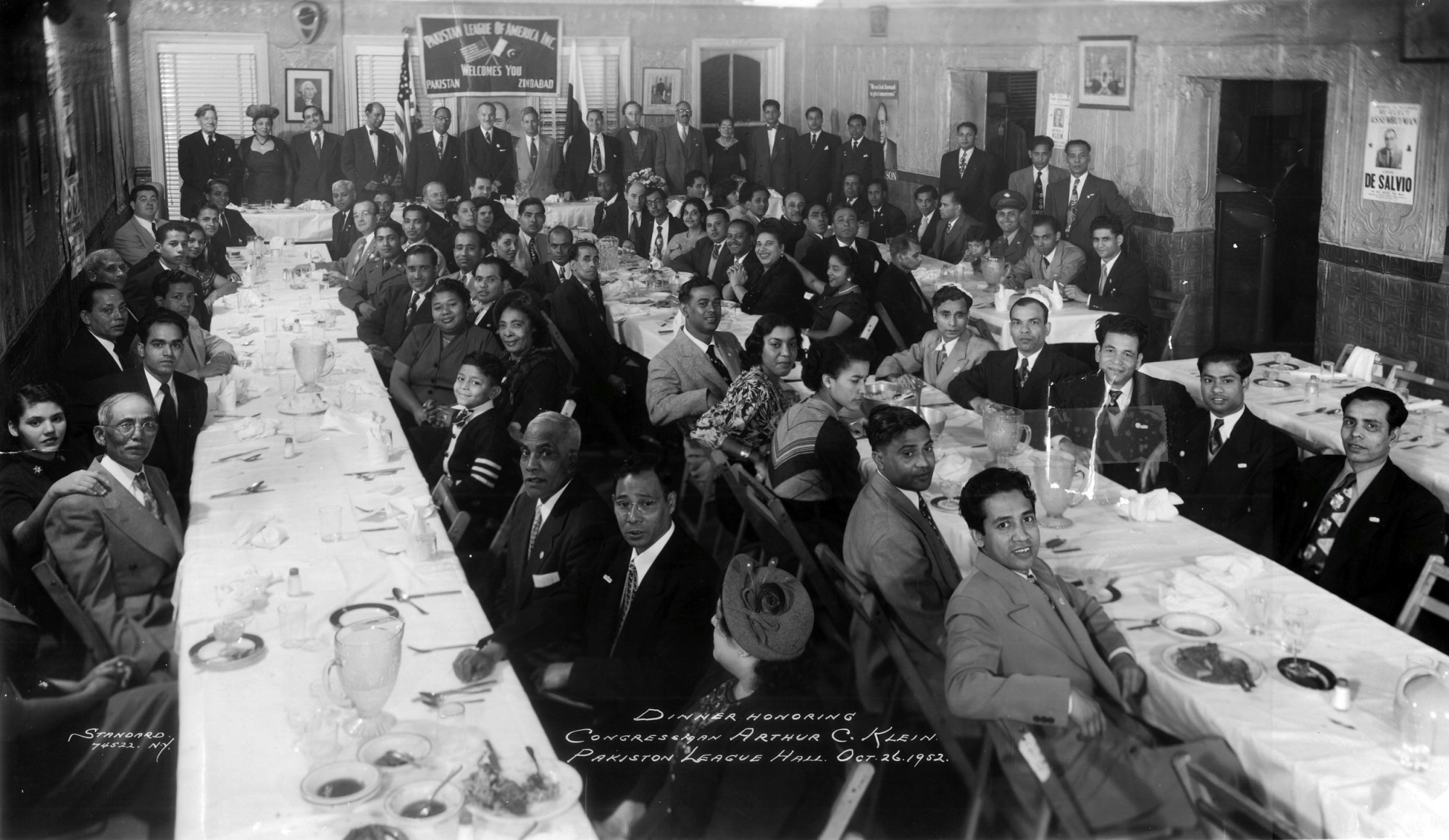
A 1952 banquet at the clubhouse of the Pakistan League of America on the Lower East Side of Manhattan. The league was established in New York in 1947, with a membership that consisted predominantly of former ship workers from East Pakistan (present-day Bangladesh), along with their African American and Puerto Rican wives and multiracial children.Courtesy of the family of Ibrahim Chowdry
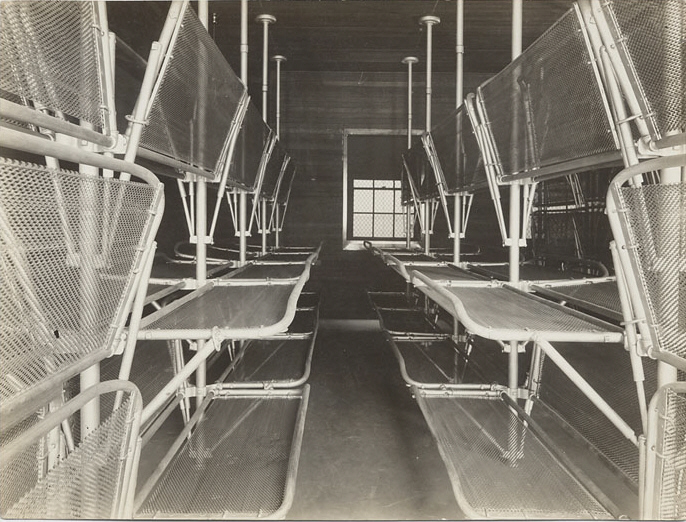
A dormitory at the Angel Island Immigration Station in San Francisco Bay, California, where immigrants coming from China, Japan, Korea, Russia, and South Asia were monitored, interrogated, and detained.
North, Hart Hyatt, 1871- - U.S. Immigration Station, Angel Island, San Francisco Bay; http://sunsite.berkeley.edu/cgi-bin/flipomatic/cic/images@ViewImage?img=brk00001197_16a

Asian Immigrants Arriving at Angel Island, 1911
U.S. Public Health Services photo, National Archives #90-G-2038 (ARTstor Slide Gallery)
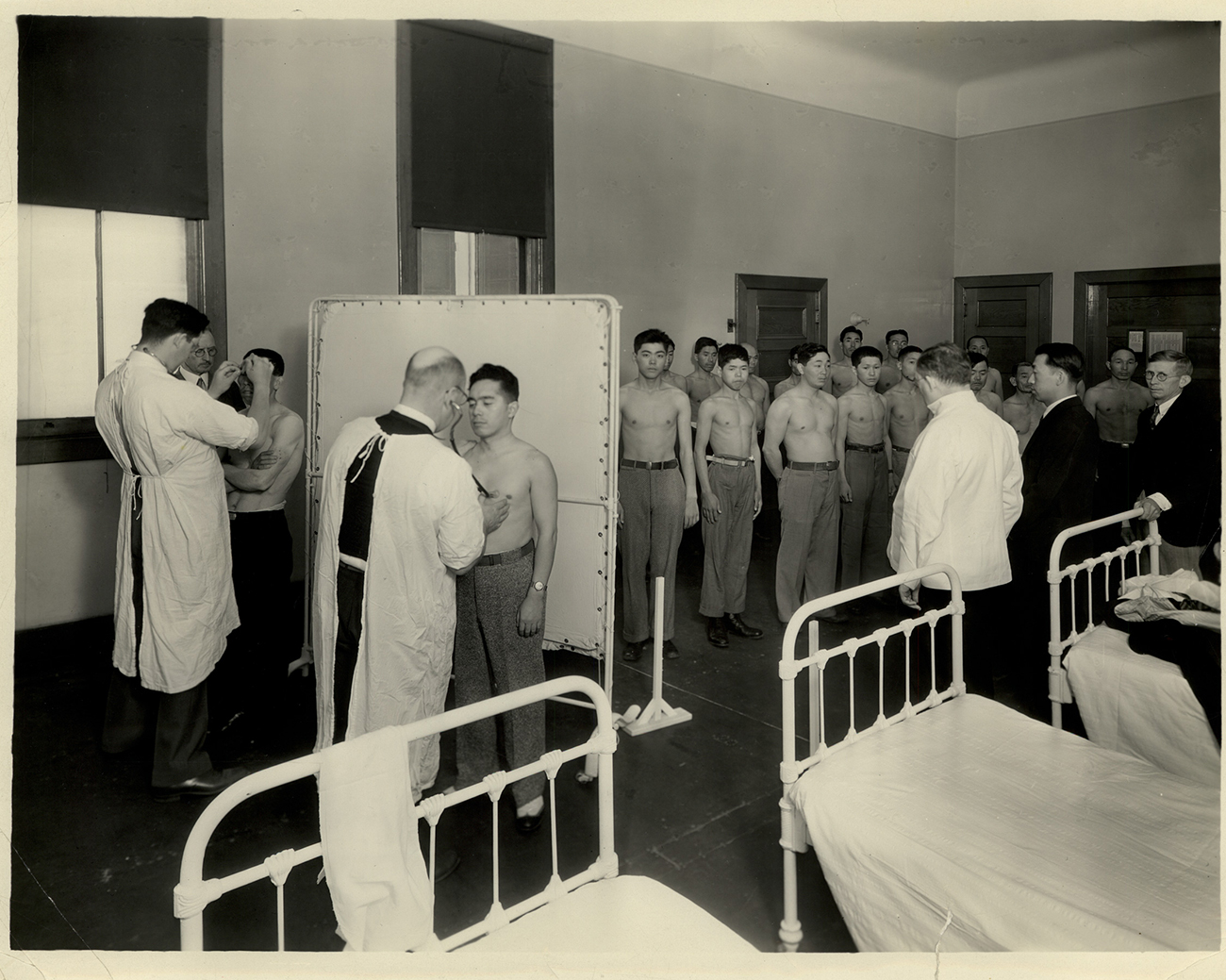
U.S. Public Health Service physician Inspets Asian immigrants for trachoma at the Angel Island Immigration Station, California 1910s- Courtsy of U.s. Nationa Library of Medicine











The Constitution of the United States translated into Lao






Palumbo, F., photographer. (1964) Miss April Lou, teacher at PS 1, Manhattan, with six Chinese children, recent arrivals from Hong Kong and Formosa, who are holding up placards giving his or her Chinese name both in ideographs and in transliteration and the name to be entered upon the official school records / World Telegram & Sun photo by Fred Palumbo. New York, 1964. [Photograph] Retrieved from the Library of Congress, https://www.loc.gov/item/94512334/.

Kaur, R. (July 2016). "South Asian Americans Want to Be Accepted — Not Merely Tolerated." HuffPost. huffpost.com.

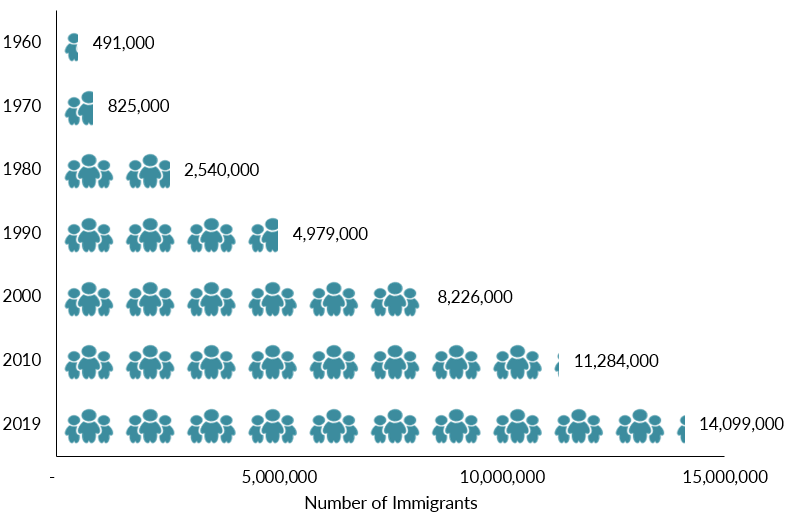
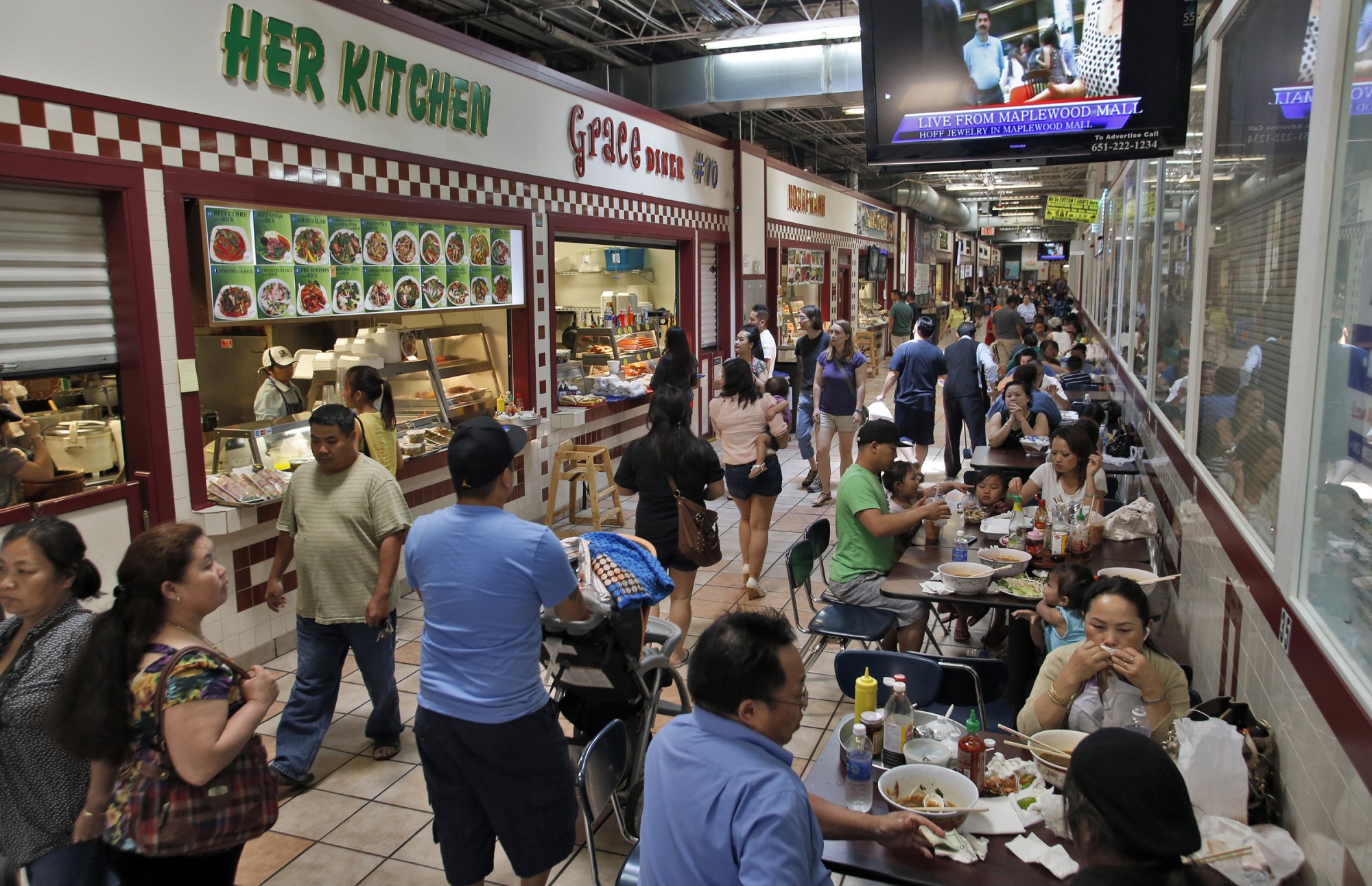 The Hmong Village Market in St. Paul, Minnesota, in 2013.Marlin Levison / Star Tribune via Getty Images
The Hmong Village Market in St. Paul, Minnesota, in 2013.Marlin Levison / Star Tribune via Getty Images






Photo: The Philippine Reporter. Filipino-American veterans of World War II

Zong, J., and Batalova, J. (January 2016). "Asian Immigrants in the United States." Migrationpolicy.org.
Piper, N., and Charbit, Y. (2019). "Editorial: Migration in Asia and the Pacific." Revue européenne des migrations internationales, 30(2): .https://doi.org/10.4000/remi.12439.
Smithsonian National Museum of American History. "Liners to America" from On the Water: Stories from Maritime America.
Chen, A. (October 2015). "The Making of Asian America." JSTOR Daily. https://daily.jstor.org/making-asian-america/
Pew Research Center (April 2013). "The Rise of Asian Americans." Pewresearch.org.
Budiman, A. (April 2021). "Indians in the U.S. Fact Sheet." Pewresearch.org.
Smith, L. N. (September 2018). "Asian-Americans Make Up Most of the New U.S. Immigrant Population." National Geographic. NationalGeographic.com.
US Library of Congress. "Immigration and Relocation in U.S. History: Chinese Immigrants." Presentation. Loc.gov.
Hanna, M., and Batalova, J. (October 2020). "Indian Immigrants in the United States." Migrationpolicy.org.
Sheth, M.(2006). "Asian Indian Americans.” In Asian Americans: Contemporary Trends and Issues, edited by Pyong Gap Min. 2d ed. Thousand Oaks, CA: Pine Forge Press.